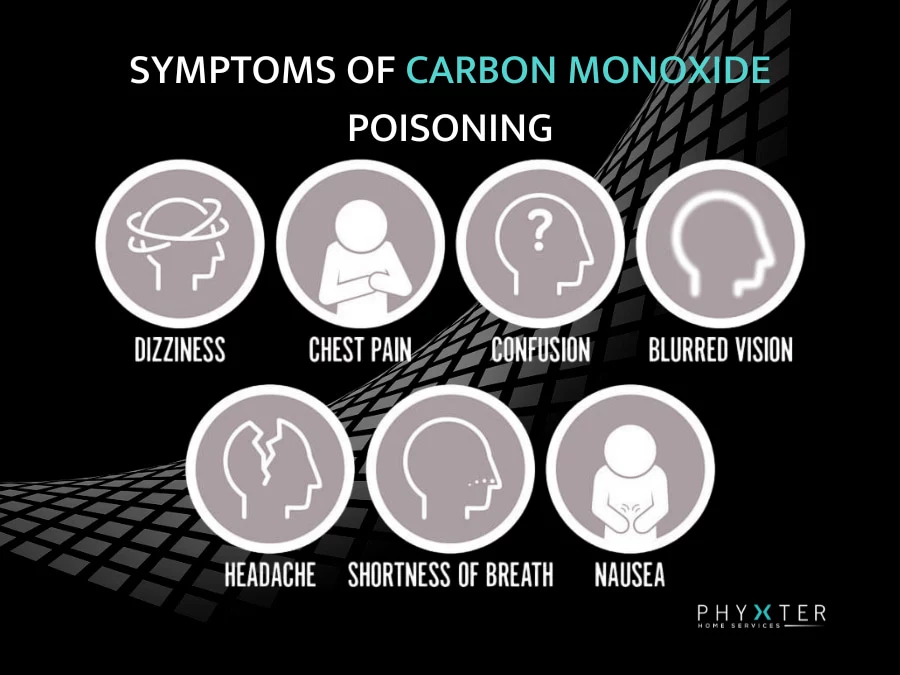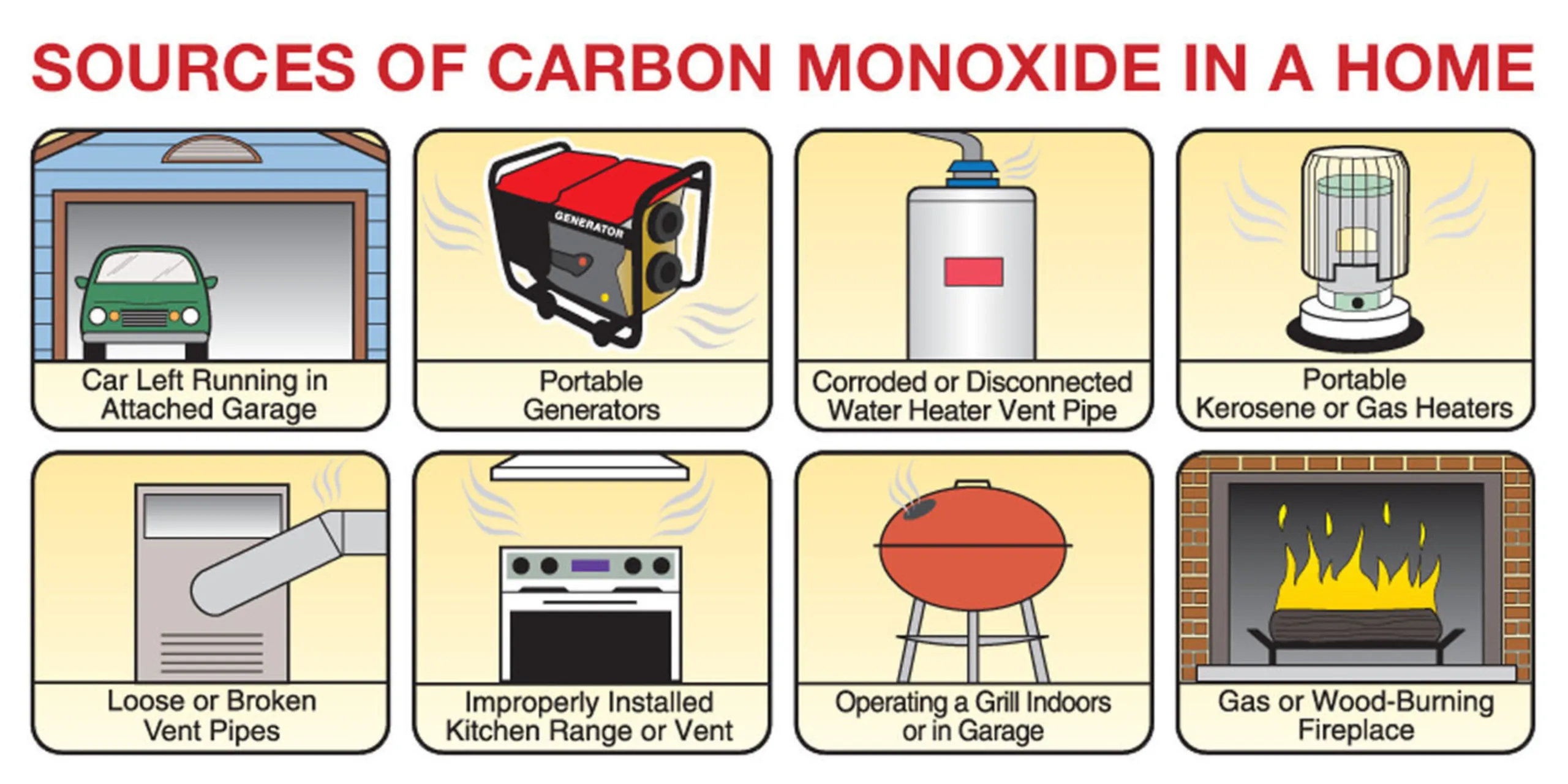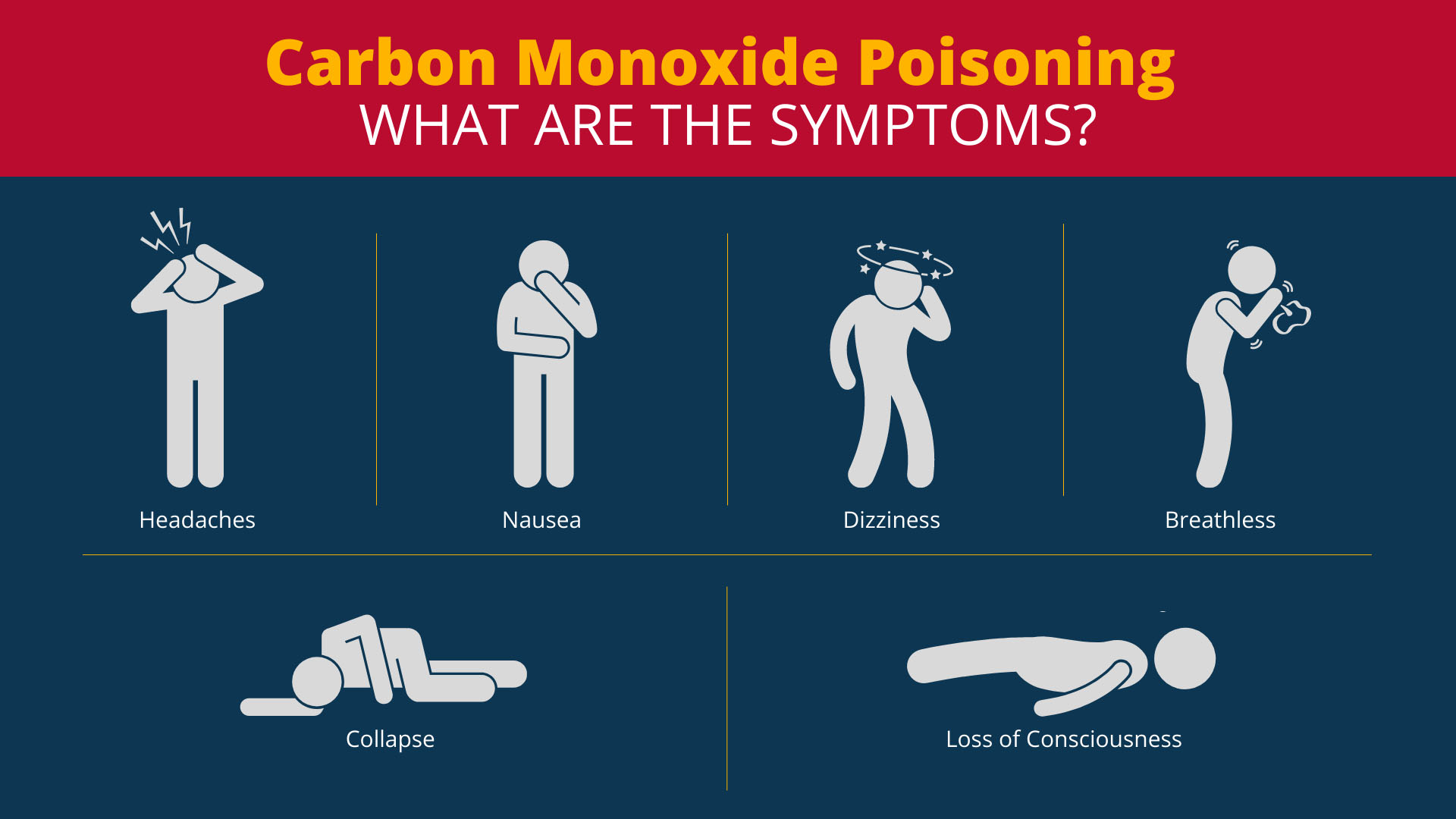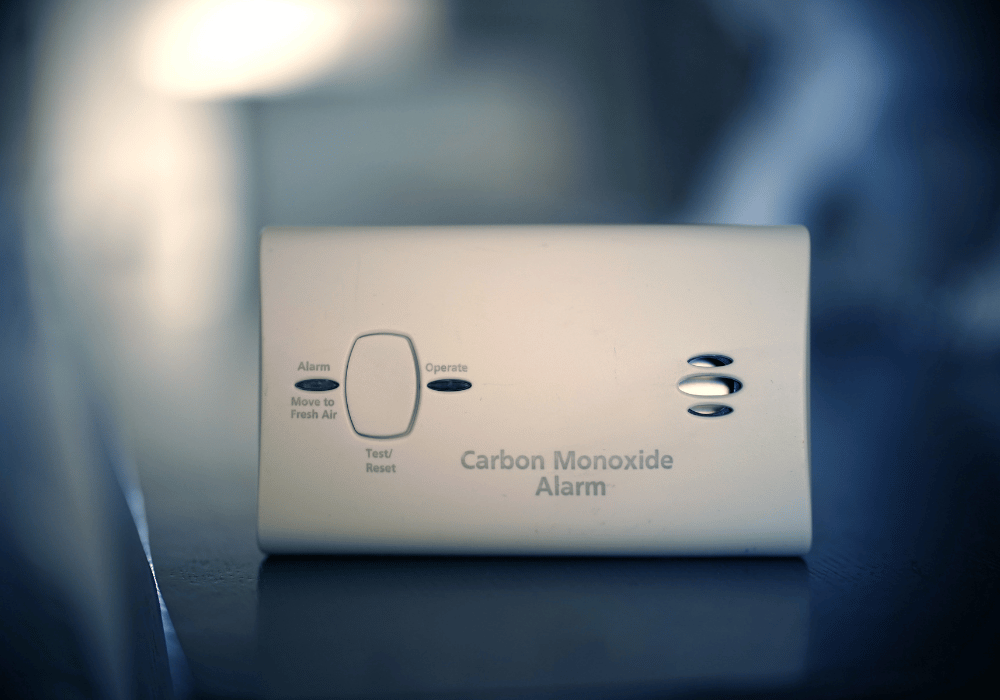Symptoms Of Carbon Monoxide From Furnace

Frequently Asked Questions: Carbon Monoxide Poisoning from Your Furnace
Carbon monoxide (CO) is an invisible, odorless, and deadly gas. A malfunctioning furnace is a common source of CO leaks. Understanding the symptoms of CO poisoning can save lives. This FAQ addresses common questions homeowners and facility managers have about carbon monoxide poisoning related to furnaces.
Question 1: What are the early symptoms of carbon monoxide poisoning from a furnace?
Early symptoms of CO poisoning can often be mistaken for the flu. It's crucial to be aware of these initial warning signs, especially during heating season when furnaces are in frequent use. Keep in mind that children, pregnant women, the elderly, and people with pre-existing heart or respiratory conditions are often more susceptible to CO poisoning.
- Headache: A dull or throbbing headache is one of the most common early symptoms.
- Dizziness: Feeling lightheaded or unsteady.
- Weakness: An unexplained feeling of fatigue or muscle weakness.
- Nausea: Feeling sick to your stomach; may be accompanied by vomiting.
- Shortness of Breath: Difficulty breathing or feeling like you can't get enough air.
- Confusion: Difficulty thinking clearly or concentrating.
Important Note: If multiple people in your home or building experience these symptoms simultaneously, especially when the furnace is running, immediately suspect CO poisoning and take action.
Question 2: Are the symptoms of CO poisoning from a furnace different from other sources of CO?
No, the symptoms of CO poisoning are generally the same regardless of the source. The insidious nature of carbon monoxide is that it prevents your blood from carrying oxygen properly. Therefore, the symptoms are related to oxygen deprivation. A furnace is merely a potential source. Other sources include gas stoves, generators, and car exhaust.
However, the onset of symptoms might differ depending on the concentration of CO and the duration of exposure. A rapidly leaking furnace may cause symptoms to appear more quickly and intensely than a slow leak.
Question 3: How can I tell if my furnace is leaking carbon monoxide? I don’t have a CO detector.
Having a working CO detector is the best way to detect a leak. However, if you don’t have one, look for these warning signs. Do not rely solely on these signs as your primary method of detection; they are not foolproof. Install CO detectors immediately!
- Soot or Rust: Excessive soot or rust around the furnace, especially near the vent pipe, could indicate incomplete combustion and potential CO production.
- Yellow or Flickering Flame: A properly functioning gas furnace should have a blue flame. A yellow or flickering flame can indicate incomplete combustion. Note that this usually requires visual inspection of the burner, which should only be done by a qualified technician.
- Damaged Vent Pipe: A damaged, disconnected, or improperly installed vent pipe can allow CO to leak into your home. Visually inspect the vent pipe for any signs of damage or separation.
- Water Leaks: Excessive condensation or water leaks around the furnace can also indicate problems with combustion.
- Strange Odors: While CO is odorless, a malfunctioning furnace may produce other unusual odors that could indicate a problem. Note that these odors are not the smell of carbon monoxide itself.
- Physical Symptoms in Multiple Occupants: If multiple people in the building are experiencing flu-like symptoms, especially when the furnace is running, suspect CO poisoning.
Important Note: If you suspect a CO leak, do not attempt to repair the furnace yourself. Contact a qualified HVAC technician immediately.
Question 4: What should I do if I suspect carbon monoxide poisoning from my furnace?
If you suspect CO poisoning, act quickly and decisively. Your safety and the safety of others should be your top priority.
- Evacuate: Immediately evacuate everyone from the building. Do not linger to open windows or gather belongings.
- Fresh Air: Once outside, get fresh air.
- Call Emergency Services: Call 911 or your local emergency number. Explain that you suspect CO poisoning and provide your location.
- Seek Medical Attention: Seek immediate medical attention for anyone experiencing symptoms of CO poisoning. Tell the medical professionals that you suspect CO poisoning. They can perform a blood test to measure CO levels.
- Do Not Re-enter: Do not re-enter the building until it has been inspected and cleared by the fire department or a qualified HVAC technician.
- Contact HVAC Technician: Have a qualified HVAC technician inspect and repair your furnace before using it again.
Important Note: Even if symptoms seem mild, it's crucial to seek medical attention. CO poisoning can have long-term health consequences.
Question 5: What are the long-term effects of carbon monoxide poisoning from a furnace?
Even after receiving treatment for CO poisoning, some individuals may experience long-term health effects. The severity and duration of these effects depend on the level of CO exposure and the individual's overall health.
- Neurological Problems: Long-term neurological problems can include memory loss, difficulty concentrating, personality changes, and impaired motor skills.
- Cardiovascular Problems: CO poisoning can damage the heart and lead to long-term cardiovascular problems, such as an increased risk of heart attack or stroke.
- Respiratory Problems: Individuals with pre-existing respiratory conditions may experience worsened symptoms or develop new respiratory problems.
- Fetal Damage: CO poisoning during pregnancy can cause fetal damage, including birth defects and developmental delays.
- Death: In severe cases, CO poisoning can be fatal, even after treatment.
Important Note: If you have experienced CO poisoning, it's essential to follow up with your doctor to monitor your health and address any potential long-term effects.
Question 6: How can I prevent carbon monoxide poisoning from my furnace?
Prevention is key to avoiding CO poisoning. Regular maintenance and awareness are crucial.
- Install CO Detectors: Install CO detectors on every level of your home or building, especially near sleeping areas. Test them monthly and replace the batteries at least twice a year (when you change your clocks for daylight savings time). Consider buying detectors with a digital display that shows the CO level. Replace detectors every 5-7 years, or according to the manufacturer's instructions.
- Annual Furnace Inspection: Have your furnace inspected and maintained annually by a qualified HVAC technician. They can identify and address potential problems before they lead to CO leaks.
- Proper Ventilation: Ensure proper ventilation for your furnace and other fuel-burning appliances. Do not block or obstruct vents.
- Never Use Gas Appliances for Heating: Never use gas ovens or stoves for heating your home. These appliances are not designed for this purpose and can produce dangerous levels of CO.
- Avoid Using Generators Indoors: Never use generators indoors or in enclosed spaces, such as garages. Generators produce high levels of CO.
- Regularly Check Vent Pipes: Visually inspect the vent pipes connected to your furnace for any signs of damage, rust, or separation.
- Know the Symptoms: Be aware of the symptoms of CO poisoning and act quickly if you suspect a leak.
Question 7: What maintenance should I perform on my furnace to prevent carbon monoxide leaks?
While a professional inspection is essential, there are some basic maintenance tasks you can perform to help prevent CO leaks. However, if you are not comfortable performing these tasks, it is best to leave them to a qualified technician.
- Change the Air Filter Regularly: A dirty air filter can restrict airflow and cause the furnace to work harder, potentially leading to incomplete combustion. Change the filter every 1-3 months, or as recommended by the manufacturer.
- Visually Inspect the Burner Flame (If Accessible): If you can safely access the burner, check the flame. It should be blue and steady. A yellow or flickering flame indicates a problem. If you see a yellow flame, contact a qualified HVAC technician. Do not attempt to adjust the burner yourself.
- Clear Debris Around the Furnace: Keep the area around the furnace free of clutter and debris. This ensures proper airflow and prevents flammable materials from coming into contact with the furnace.
- Ensure Proper Ventilation: Make sure that vents and air intakes are not blocked by furniture, curtains, or other objects.
- Listen for Unusual Noises: Pay attention to any unusual noises coming from the furnace, such as banging, rattling, or whistling. These noises could indicate a problem.
- Check for Rust or Corrosion: Visually inspect the furnace and vent pipes for any signs of rust or corrosion.
By understanding the symptoms of CO poisoning and taking steps to prevent leaks, you can protect yourself and your loved ones from this silent killer. Regular maintenance and working CO detectors are your best defense.







:max_bytes(150000):strip_icc()/VWH-JessicaOlah-CommonSymptomsofCarbonMonoxidePoisoning-Standard-460087eaa2ad4058af35e4606caabe07.jpg)

